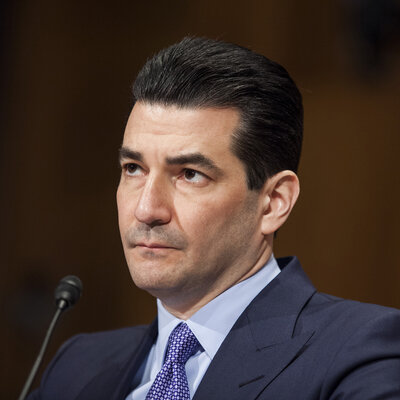
Hospital pharmacist Mandy Langston remembers when Lulabelle Berry arrived at the emergency center of Stone County Medical Center in Mountain View, Ark., last year.
Berry couldn’t talk. Her face was drooping on one side. Her eyes couldn’t focus.
“She was basically unresponsive,” Langston recalls.
Berry, 78, was having a severe ischemic stroke. Each passing second made brain damage more likely. So, Langston reached for the clot-busting drug Activase, which must be given within a few hours to work.
“If we don’t keep this drug [in stock], people will die,” Langston says.

Stone County Medical Center pharmacist Mandy Langston, who has worked at the Mountain View, Ark., hospital for nine years, says she seen the way a stroke patient receiving the clot-busting drug Activase can go “from a vegetable to living within 30 minutes of getting the drug.”
Sarah Jane Tribble for Kaiser Health News
Berry survived. But Langston fears others could die because of an unintended bias against rural hospitals built into the U.S. health law. An obscure Obamacare provision forces rural hospitals like Langston’s to pay full price for drugs that many bigger hospitals buy at deeply discounted rates.
For example, Langston’s 25-bed hospital pays $8,010 for a single dose of Activase — up nearly 200 percent from $2,708 a decade ago. Yet, just 36 miles down the road, a bigger regional hospital gets an 80 percent discount on the same drug. White River Medical Center, a 235-bed facility in Batesville, Ark., buys Activase for about $1,600 per dose.
White River participates in a federal drug discount program Congress approved in the early 1990s. The program offers significant price breaks on thousands of drugs to hospitals that primarily serve low-income patients. One federal report found the average discount ranged from 20 to 50 percent, though as illustrated with Activase, it can be much higher.
Rural hospitals have long wanted to be part of the 340B program, too, but were blocked from participating until the Affordable Care Act of 2010. The law added rural hospitals to the program, but, unlike bigger hospitals, rural hospitals can’t get discounts on expensive drugs that treat rare diseases because of a last-minute exclusion written into the ACA.

SHOTS – HEALTH NEWS
FDA Moves To Rein In Drugmakers’ Abuse Of Orphan Drug Law
That has left rural hospital pharmacists and health care workers struggling to keep medicines in stock, and wondering if they will be able to adequately care for patients.
Arkansas, for example, is in the “stroke belt,” where medical staff depend on Activase to help them battle one of the highest rates of stroke deaths in the country. When Langston went to restock Activase this year, it was so expensive she left a reorder unfilled for more than week, anxiously keeping only one dose on hand.
In Atlantic, Iowa, pharmacy director Crystal Starlin sparingly stocks oncology drugs at Cass County Memorial Hospital. Newly diagnosed cancer patients might have to wait a couple of days to start treatment.
“We just can’t keep the extra [drugs] on hand,” Starlin says.
In Vermont, North Country Hospital closed its infusion center this spring due to the soaring cost of medicines.
“That was one area we could not afford to be in,” says chief executive Claudio Fort. North Country is the only hospital in a two-county region along the Canadian border, and its roughly dozen active chemotherapy patients now must drive 45 minutes for treatment.
The rare-disease exclusion was not publicly debated before being added into the Affordable Care Act. Rather, it was tucked into the health law at the very end of the process. How it wound up there is still a bit of a mystery.
Former PhRMA chief executive Billy Tauzin says he doesn’t recall negotiating the exclusion. But, he says, the industry has consistently raised concerns about the drug discount program’s reach.
“It’s a question of how deeply you can afford to discount drugs that are expensive,” says Tauzin, who stepped down just before the ACA passed.

The small Ozark town of Mountain View, Ark., known for its crafts and music scene, is about two hours north of Little Rock. Arkansas reports some of the nation’s highest rates of stroke deaths.
Sarah Jane Tribble for Kaiser Health News
After the health law passed, PhRMA battled for years — in federal court — to keep rural hospitals from getting discounts on rare-disease drugs.
Congressman Peter Welch, a Democrat from Vermont, says it is clear whom the law hurts and helps.
“The pharma lobbyists pay attention, and their lawyers pay attention to the fine print,” Welch says. The pharmaceutical industry “changes that fine print … [and] many legislators don’t even realize [that it] will have this adverse impact on hospitals in their communities.”
The rare-disease exclusion means that certain types of hospitals — including critical access, sole community and rural referral centers — cannot get discounts on rare-disease drugs. Rare-disease drugs are also known as “orphan drugs,” which is a federally approved category of drugs that treat a disease affecting fewer than 200,000 people. Often, they carry price tags of up to $100,000 a year or more.
The Food and Drug Administration gives the orphan drug designation to a medicine as a first step when it agrees with a drugmaker’s request to study whether the medicine can be used to treat a specific rare disease. And this can happen even if a drug is already FDA-approved and on the market for use in treating a common condition.
In fact, the popular clotbuster Activase has not won final approval to treat a rare disease. But, on two separate occasions — in 2003 and 2014 — the FDA granted it the orphan designation while research into possible uses for rare conditions is ongoing.

